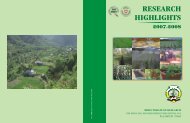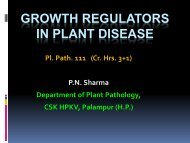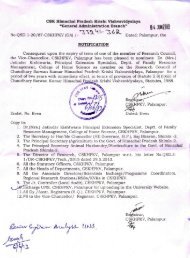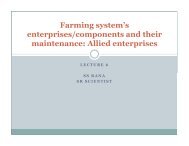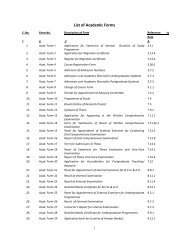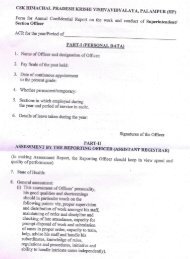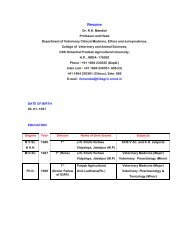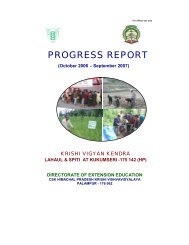animal production - CSK Himachal Pradesh Agricultural University ...
animal production - CSK Himachal Pradesh Agricultural University ...
animal production - CSK Himachal Pradesh Agricultural University ...
Create successful ePaper yourself
Turn your PDF publications into a flip-book with our unique Google optimized e-Paper software.
Disease: Infectious Bronchitis<br />
Vaccination :<br />
route vaccination<br />
Killed vaccine 1 ml i/m 1 day old -<br />
chicks<br />
Name of vaccine Dose and Primary Revaccination<br />
route vaccination<br />
Live vaccine 1-2 drops 1 day old -<br />
Intransasal chicks<br />
Drops<br />
Disease: Infectious Bursal disease(Gumboro disease)<br />
Vaccination :<br />
Name of vaccine Dose and Primary Revaccination<br />
route vaccination<br />
Live vaccine / 0.2 ml s/c Chicks 16-20 days<br />
Inactivated 2-3 wks<br />
old<br />
0.5 ml s/c Chicks<br />
above<br />
6 wks.<br />
Collection and despatch of materials for the diagnosis of infectious diseases<br />
If meaningful results are expected from any laboratory, the correct type of samples must be collected and rightly<br />
preserved to prevent their deterioration prior to arrival at the laboratory. Generally speaking, samples to be sent to a<br />
laboratory should be placed in a water-tight glass or plastic container. The container should be well packed to prevent<br />
breakage during transit, this can be achieved by keeping them in ice placed into the container. This will keep the specimen<br />
cool for eight and 24 hours depending on the external temperature. A vital point which needs emphasis is that the field<br />
veterinary officer should procure complete history of the cases and send it to the laboratory along with materials with the<br />
following information :<br />
1. Clinical history including symptoms of the disease.<br />
2. Animals involved<br />
3. Breed, age, sex.<br />
4. Numbers of <strong>animal</strong>s attacked and total population of the susceptible <strong>animal</strong>s, if possible.<br />
5. Duration of sickness or outbreak.<br />
6. No. of <strong>animal</strong>s died.<br />
7. Nature of feed, source of water supply, management, houses, pens, etc.<br />
8 Post-mortem changes.<br />
9. Time elapsed between death and collection of material.<br />
54



